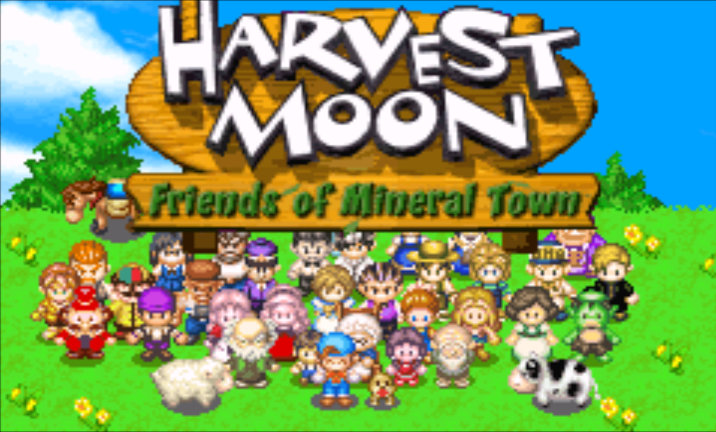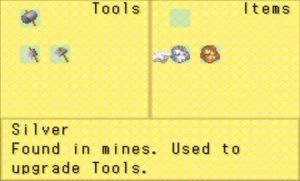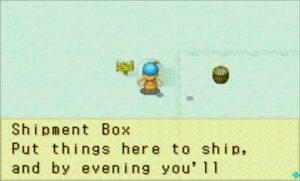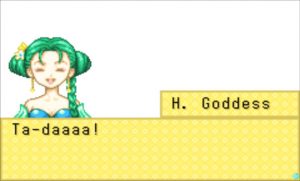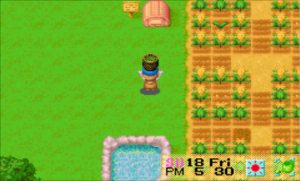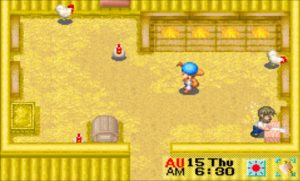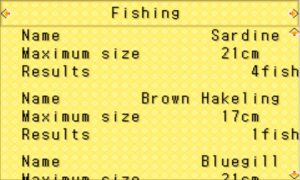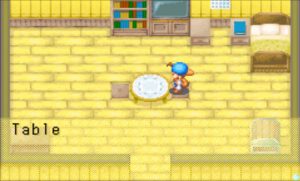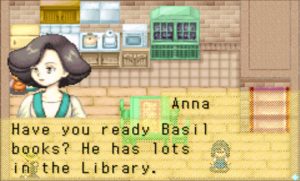I’m conflicted about Harvest Moon: Friends of Mineral Town. On release, Friends of Mineral Town (FoMT) was an innovative title that pushed the boundaries of the farming / social sim genres and raised their mass market appeal. It indisputably laid the groundwork for (spiritual) successors like Animal Crossing and the much more recent Stardew Valley. The problem, however, is just that: the game, by today’s standards – is all groundwork; all the core genre ideas are present in a neonatal sort of way, recognisable but underdeveloped. Add to that an apparent vicious insistence on making life unnecessarily difficult, and many of today’s less determined players will be put off by FoMT long before the game opens up and becomes truly enjoyable.
A bit of context: Friends of Mineral Town is popularly seen as the high-water mark for Harvest Moon: the last of the classics before a quality decline took hold that goaded the series to the brink of oblivion. FoMT innovated on Harvest Moon 1-3 for GameBoy (Color) by expanding the social experience and fuelling collectionist impulses – features that that would become staples for the genre at large. That the full potential of these ideas is not realised in FoMT, is entirely understandable, and simply implies a somewhat limited experience.
I was bothered, however, by singularly frustrating early-game design decisions that play keep-away with the classic Harvest Moon experience for a good many hours. And while I absolutely wasn’t planning to open this retro review with a lengthy discussion of inventory management, it is so downright offensive in Friends of Mineral Town and stymies your progress from the outset that I’m completely cornered by the subject.
Right, so. Here goes… It’s a mainstay of Harvest Moon that you collect things – rocks, crops, fish, forage. Picking up things off the ground and then dropping them off in a collection box for a profit so you can buy tools and more efficiently pick things up and drop them off is the inalterable core of the series. It follows that this collecting and dropping should be a simple, intuitive process – we invented door handles so we wouldn’t have to lift the entire plank from its hinges every time we try to pass through, right?
Wrong. In Friends of Mineral Town, accessing the place where gathered items are stored – the rucksack on your very shoulders – is an absolute pain. Why, in the name of the Harvest Goddess, is whistling to call your pet dog – a feature that has no practical utility – keybound to L while opening your backpack, which you need constantly, requires you to press three buttons in succession: start, right, then A. These controls aren’t customisable either, so you’ll be permanently stuck with a triple button press to perform the most essential action in the entire game – to move items about.1Okay, now I feel like a fool. Sometime after composing this review I revisited the in-game help pages and learned that A+B opens the rucksack. This instruction is buried inside one of eight sections of poorly formulated control tips on the bookcase in your farming home. I originally overlooked it entirely, not least because the hint in question doesn’t talk about a ‘rucksack’ or ‘backpack’ but a generic-sounding ‘Tools and Item Screen’.
Once you come to terms with this, you’ll discover precisely two open slots for collectable items in that rucksack. Two! But it gets worse: seed packets excepted, items do not stack. I cannot think of any game that’s stingier with inventory space. FoMT’s predecessor Harvest Moon 3 starts you off with eight empty bag spaces, plus an entirely separate 24-slot tools inventory accessible at all times! That’s how it should be! To be sure, imposing encumbrance constraints is an oft-seen game mechanic used for manifold purposes, including progress-gating and preventing item-hoarding that may break a difficulty curve. But a paltry two slots certainly don’t fit with the latter philosophy and are an extremely in-your-face, neener-neener sort of way to accomplish the former. Sadly the consequences of this design choice are felt constantly in the early game.
Since you’ll be heavily dependent on foraging and mining in the early game to earn buck or two so you can start planting crops, it’s not uncommon to trek back and forth between the mines, forest or beach to the farm’s deposit box repeatedly, dropping off two pieces of ore every 20 seconds. Or a mushroom. Or some seashells. It’s as though the game demands that you pass its custom rite of initiation before you can start having fun: “Oh yeah, you wanna be a farmer? You’ll have to earn your stripes. Walk this path 200 times until your thumbs are sore from holding down the D-pad.”
Once you’ve finally earned the gold to plant a few acres of, say, the lucrative spring crop potatoes, you’ll wanna weed, de-branch, and rock-clear your fallow soil. But embark on this plan to scythe, chop and hack away and you’ll notice there are only three inventory slots to fit five basic tools. As a result you can never at once carry all of the axe, scythe, hammer, hoe and watering can to complete the cycle of soil prep and crop growing. Again, mindless ambulation is required, this time back and forth into the farmhouse to repeatedly swap out tools.
These quality of life issues extend into the harvest phase. Once you’re ready to pick the fruits of your labour of course crops don’t stack either, so rather than harvesting an entire field sequentially and dumping it into the collection box en masse, you must reap each crop individually, suspend it overhead in some absurdist Wingardium Leviosa and race back and forth to deliver it. Okay, fine. This is the early game, right? Surely that larger backpack that doubles your inventory space to a whopping 4 slots, priced at a measly 3000G, will alleviate the monotony?
Well, no – you still cannot benefit optimally from this upgrade because for reasons known only to Marvelous Interactive it is impossible to drop items straight from your inventory into the deposit collection box. Pressing A over the box maddeningly opens the tooltip rather than taking you to where you want to be – a screen to ferry objects from inventory to receptacle. Instead you must instead position yourself squarely in front, do the start → right → A thing, manually shift an item to the overhead ”held” slot, exit the menu, and then press A. This process is no faster than legging it around entire farm performing Wingardium Leviosa on one crop at a time.2After trawling forums I eventually learned that pressing L + A cycles objects in hand from the rucksack, speeding up the process ever so slightly. However this is not explained in the game despite eight help sections devoted to controls. And oh, if you’re off-target only marginally when delivering stuff, then your numpty in blue overalls chucks the produce squarely onto ground where it instantly vanishes. The Harvest Goddess is a cruel mistress.
During the game’s first month, that famous Nickelback refrain “Are we having fun yet?” came to mind again and again and again…
Salvation finally arrived with the acquisition of the exalted ‘basket’, a wicker box to plonk down in the middle of a crop field that we shall henceforth venerate with title case. It holds 30 items and can wonderfully be emptied into the collection box in a single dip. Hooray! But even if you’re cognisant the Basket exists (which I was not), fronting the supermarket’s 5000G price tag still requires you to beeline for it by spending the majority of a full season in unchecked menial agony either running foraging half-marathons across town or carving out 3-foot deep walkways in your fields as you work them from dusk till dawn. Though the Basket be praised, harvesting in Friends of Mineral Town never reaches the “stack all in inventory and get on with life” practicality of Stardew Valley. And even if the burden of crop-reaping is somewhat lightened by the Basket, the menial legacy survives unadulterated in livestock rearing, as animals must be fed separately, one bushel of fodder at a time, every single day.
Now, I accept that any farming sim must gate progress somehow to proffer that sweet incrementalism and prevent you from tilling half the Midwest in a 30ft wide combine on your second day in the office. Harvest Moon has always done this. Stardew Valley does this. But neither previous Harvest Moons nor Stardew Valley were so brazen – nor foolish – to actually implement obnoxious inventory management as a way of baking in draconian starting restrictions. Where FoMT goes awry, then, is that it substitutes lopsided demands on players’ time for clever game design. I’m of the opinion that asking players to invest in prolonged repetitive tasking in a videogame is uninspiring design in the first place. But without offering commensurate reward it is plain insulting. And a Basket fulfilling a function so rudimentary – i.e. the ability to harvest semi-efficiently – that it should be hard-coded into the game in the form of sensible inventory management with a greater number of backpack slots in no way justifies the hours of rinse-repeat playtime required to obtain it.
To take this argument further, the beat-em-’up equivalent would be loading an otherwise harmless boss with a truckload of HP that prompts an agonizing grind to take down (rather than programming him with challenging and hard-to-counter combos). Or to draw from strategy games, to plaster battle maps with ever-increasing numbers of enemies in lieu of designing tactically interesting situations. We commonly scratch our heads at such scenarios for their failure to create meaningful challenge, and the general price – as in Friends of Mineral Town – is tedium and a sense of time wasted.
That first summer, I earned enough cash to buy a full complement of four chicken and four cows. Thus financially secure 4life in two seasons I was initially determined to never touch a watering can again, nor did I feel a particular desire to painstakingly nurse another acre of crops through a 30-day growing season. But after upgrading the sprinkler to gold-status using ores I’d found in the mines – meaning it could now moisten nine, not merely one, crop in one go, leading to massive bump in efficiency – and discovering just how lucrative sweet potatoes are (a harvest every two days; seriously, is that a bug?) I couldn’t resist planting a few squares even though I had sworn not to. Here I finally felt I was hitting the Harvest Moon groove. With the early game slog surmounted, Friends of Mineral Town put on its user-friendly face, and I began to forgive its erstwhile insolence and happily struck out to explore the non-farm content.
First and foremost this was getting to know the personalities of Mineral Town. It’s this new-kid-in-town induction into the local social fabric of a small community that both Stardew Valley and Animal Crossing do so exceedingly well – Stardew by presenting credible characters with palpable hopes, dreams and aspirations to interact with; Animal Crossing by affixing colourful personae to oddball-yet-huggable anthropomorphised creatures. FoMT has two dozen or villagers, a few among them handful eligible bachelors and bachelorettes, but all are kind of… bland.
The game definitely tries to present a spectrum of temperaments among NPCs. Amongst the maritable girls, for example, we find all the classic archetypes, from caring to feisty to bookish to outgoing. Yet these are presented in such an anime-esque, larger than life way that it’s difficult to view them as believable individuals and I certainly couldn’t connect emotionally – or relate, even – more than superficially to any of them. Beyond this core circle NPC’s are generally poorly fleshed out; functional in the roles they were designed for, but no more.3As an example, I’d encourage you to compare the character of Clint, the blacksmith of Stardew Valley, to FoMT’s Saibara. I very quickly gave up on the expectation or humorous or profound interaction and mentally relegated them to Truman Show hollow decor.
Fine, if I can’t build satisfying rapport with my virtual neighbours, perhaps I’ll just hoard and collect stuff – fill out a museum and complete an encyclopedia or two. Well… Not entirely. On the UI you find a pocket book that tracks an assortment of playthrough statistics, such as an itemised breakdown of everything you’ve ever shipped, an earnings report with day-by-day revenue/expenditure indicators and the status of your livestock. Watching the numbers go up in this evolving data collection was oddly satisfying, which I put down to the satiation of my desire to establish a track record in a game – a numerical ‘been there, done that’, if you like. I’m glad it’s there, for without it, not much in Friends of Mineral Town betrays the passage of time or the effort you’ve put in. Seasons rotate routinely as days are struck off the calendar, but the outward appearance of Mineral Town – and much of your own ranch – is virtually unchanging.
And that much-desired museum – perfect for showing off time spent with the game – is nowhere to be found in FoMT even though the potential for it is plain to see. Mines could be packed with gemstones, the skies with insects, and the soil with fossils. Yet apart from the occasional butterfly that idly floats by, none are in the game, and this makes for a glaring omission compared to modern-day standard-bearers Animal Crossing and Stardew Valley. Instead, we make do exclusively with a page on fishing in the pocket book that records aggregate data – size, # caught – of each species you’ve reeled in. It’s a nice touch, but a text entry pales in comparison to admiring that elusive Coelacanth you caught as it drifts leisurely along the floor of your local museum’s fish tank. It was this physical representation of past efforts that drove my completionist impulses (and much enjoyment) in the original Animal Crossing and again in New Leaf. The incentive to fish rivers bare in all seasons and conditions to see what turns up is poorly exploited in Friends of Mineral Town.
Well, in that case, I’ll just pour my energies into making my house the most eminently luxurious in town. This ambition Friends of Mineral Town accommodates a little bit better. Your humble starting cottage can be upgraded twice to a spacious farmhouse with room for a plus-one. Along the way you can pour funds into Telsell to fill your home’s barren interior with essential furniture. Again, the core idea is sound. Customisation of space prompts a sense of ownership, which makes you want to put in the time and effort to make your virtual lodgings a true home away from home. And while it is indeed satisfying to farm your way into an impressive freehold, interiors are destined to be nondescript as furnishings are limited to just over a dozen bog-standard items. Progression is closer to completing a checklist – buy a clock, place it down, then move on to the next available object – than an actual act of decoration. True personalisation options are essentially non-existent.
Between an uncaptivating social life, meagre options for world-building and household plainness, I find that none of the components that make up the Mineral Town non-farm game hold up particularly well. So once FoMT’s farming core finally began to agree with me, regrettably there was no convincing follow-up to make sure the hook stayed in. Basically, Friends of Mineral Town has a serious mid-game content problem. My impression stands that Marvelous Entertainment may have set up the early-game as deliberately punishing to obfuscate the fact that FoMT non-farming mechanics come up light.
This strategy can work, of course, because progress in games like Harvest Moon tends to be multiplicative; the reinvestment of cash from your initial harvest allows you to buy more crops and secure even bigger harvests. These yield money for tool upgrades to make farming vastly more efficient, freeing up time to engage with other, non-farm elements of the game. Pulling back the baseline a few rungs significantly slows player progression into the Uncle Scrooge stage, thereby putting off the moment where the player might abandon farming and thus run out of things to do (such as filling a non-existent museum).4Sure, you could save up for the vacation house preposterously priced at 100,000,000 gold, but that’s just a little silly in how divorced it is from the standard pricing in the game (upgrades to your farmhouse cost 3,800 and 10,000 gold, respectively).
If I’m right and this unfriendly early-game was put in place purposely, the question is what sparked it. Certainly Friends of Mineral Town (and its PS1 counterpart, Back to Nature) pioneered novel non-farm mechanics that would later become mainstays and did not experience the benefit of iteration to perfection. But it’s also plausible that a tight game development cycle factored into it. For a time-pressed developer aware of a mid to late game content vacuum, slowing down the early game is a sensible choice. After all, creating additional content to extend the player’s experience is a difficult, resource-intensive process, while ramping up FoMT’s initial grind can only have been a matter of minor tweaks. Of course, these two explanations are not mutually exclusive; they do mean, however, that by today’s standards Friends of Mineral Town is a sub-optimal game.
Why do I say Friends of Mineral Town may have been rushed to release? For one thing, dialogues are riddled with obvious typos and spelling errors. Tooltips and flavour texts also seem unfinished. Calling up information for the vast majority of selectable objects in the game just returns the name of that object. For example, pressing A on a table of any kind invariably just says “Table”. Highlighting a counter never reads anything other than “Counter”. The infrastructure for flavour text is clearly in place but hasn’t been filled in. And while FoMT is generally a good-looking game, visually, too, a lack of polish hints of hurry. The layout of Mineral Town town is rigid and inorganic with straight as a die roads that are textured so uniformly they look like placeholders. Meanwhile in the centre of Mineral Town there is a gargantuan market square that feels as if it was designed to be packed with… something – merchants, mini-games, you name it – but you’ll find that there is precisely zilch to see, except during the occasional festival. Maybe I’m seeing ghosts here, but my impression is strong that visual and textual fine-tuning were struck from the to-do list at the eleventh hour. I invite you to play and decide for yourself.
In the end, I can’t help but feel disappointed with Friends of Mineral Town. It’s an inventory-hell marred slog for much too long and peters out far too quickly once it gets going. There’s no question that FoMT improved substantially on its GBC prequels and I’ll still take it any day over Harvest Moon DS and the trilogy that followed, but its status as the pinnacle of accomplishment for the Harvest Moon series is perhaps also an indictment of subsequent titles as much as praise for FoMT itself. Now that Stardew Valley and Animal Crossing spoil us for choice, it’s hard to justify picking Friends of Mineral Town up again for reasons other than sheer nostalgia.
- Harvest Moon 3 (2001) - March 5, 2020
- Pokémon Trading Card Game 2 (2001) - February 5, 2020
- Yu-Gi-Oh! Dark Duel Stories (2002) - January 5, 2020

